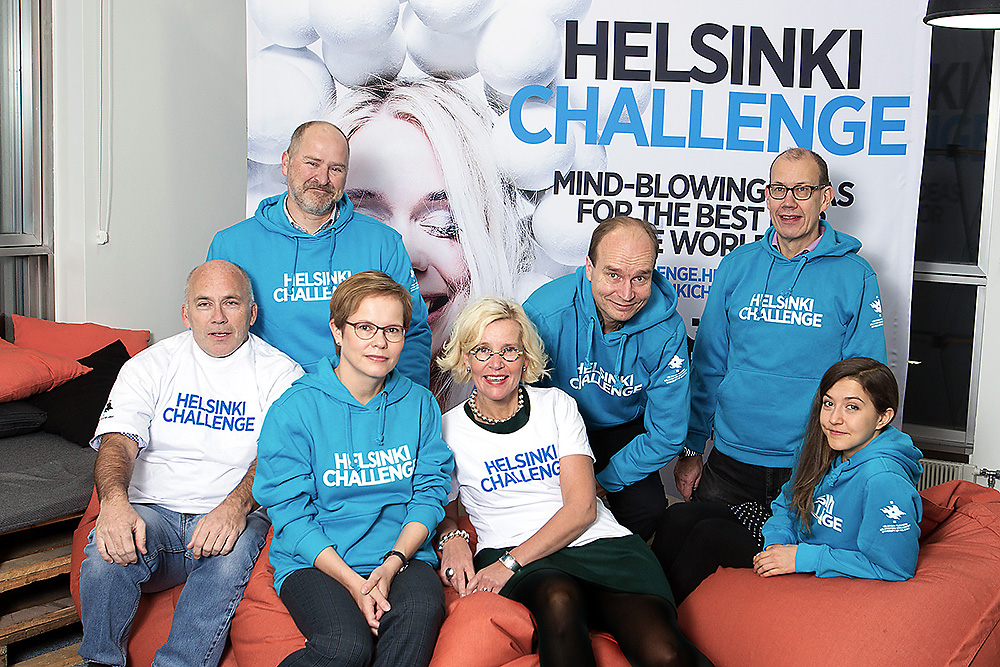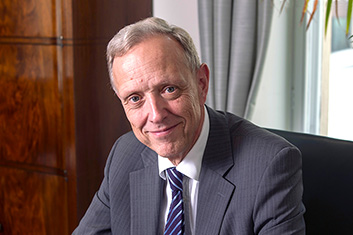
By Johanna Lemola
Finland’s leading university celebrates its past by turning eyes to the future.
The University of Helsinki feels younger than ever at age 375 – a venerable number even by European standards.
The university marks the anniversary by renewing itself.
In a spirited mood, the university opens to the city space, to citizens and to the world. The university physically rebuilds some of itself, becomes increasingly international and makes research processes transparent in its anniversary year.
Moving into city space
The University of Helsinki and the City of Helsinki have many shared goals. One of them is to open previously closed spaces in the city centre to the public.
The university has a massive presence in the Helsinki city centre, occupying several city blocks. But until recently few people other than students and staff ever set foot in a university building.
Things changed in 2012 with the new Kaisa university library, which is open to the public. Think Corner, a public meeting place and the university’s interface between research and citizens, opened in the same year.
The university’s centrally located administrative building will follow. The anniversary year sees the beginning of a project to rebuild some of the building into a relaxed meeting place for citizens and the university staff. Visitors will be served by a café and a reading corner. The rebuilt façade will be airy and transparent, and it will lead visitors to an open inner courtyard. Think Corner will serve the public in a space that opens directly to the pedestrian street outside.
“We move into the city space, and our City Centre Campus becomes an increasingly dynamic part of the city,” confirms University Chancellor Thomas Wilhelmsson.
Building an international city
The university brings dynamism to Helsinki in many other ways.
“The City of Helsinki has a strong vision to develop the city into an internationally attractive metropolis. We share this goal with the City and support the achievement of it,” Wilhelmsson continues.
“We bring strong international skills to Helsinki through our international students and researchers,” he points out. The university has 3,000 international exchange and degree students from over 100 countries and more than 1,000 international researchers.
Wilhelmsson explains the importance of attracting international talent to the university: “Our international students and staff prepare our Finnish students for the global world. It’s in the best interests of Finnish society to have here smart young people from other countries. Furthermore, our international alumni serve as ambassadors for Helsinki and Finland all over the world.”
Celebrating anniversary by tackling global challenges
The University of Helsinki’s mission is to serve society and to help build a more just world. Today that mission involves a strong global component.
The university’s aspirations are underscored by its science-based 375th anniversary competition Helsinki Challenge. The university has invited its students, researchers and outside experts, many of them international, to tackle hot challenges faced by society and the global community. The experts team up to search for solutions to those challenges on a multi-disciplinary basis. Twenty semi-finalist teams, selected from more than 140 proposals, develop their ideas over the anniversary year.
One team works on moral decision making by intelligent machines. Another team looks for a permanent cure for inherited blood diseases. Some others seek ways to protect unborn babies against harmful substances, to protect biodiversity, to make the general public and decision makers to fully comprehend climate change, and to make the workplace an engaging environment. The solutions blend fields ranging from medical science to art.
The winners of Helsinki Challenge will be announced in November 2015 and share 375,000 euros between them, but the purpose of the competition is to develop all ideas further and to have them make permanent contributions to the future of humankind.
“We want to celebrate our anniversary by looking forward,” Wilhelmsson asserts.
On top of the world

University of Helsinki Chancellor Thomas Wilhelmsson recalls an American Fulbright scholar describing the university some years ago: “The best-kept secret in the world!” she exclaimed.
Today, the University of Helsinki is no longer a secret.
Shanghai Academic Ranking puts the University of Helsinki in 73rd place among the 17,000 universities of the world. All university ranking programmes place the University of Helsinki in the top 100. For example, there is not a single Chinese university ahead of the University of Helsinki in the rankings.
“We no longer have to explain ourselves and where we come from. In China, we’re practically met with a red carpet,” Wilhelmsson says.
China is the latest destination of the University of Helsinki’s top-of-the-world research. Among the many themes pursued with Chinese partners including Beijing University, University of Helsinki Professor Markku Kulmala is developing an air-quality observation station near Beijing to find solutions to air pollution problems in China. Professor Kulmala is the world’s most quoted geoscientist.
The European leader in geosciences, the University of Helsinki’s other strong areas include clinical and translational medicine, genetics and biosciences.
In the field of neurobiology, one university team looks at what is needed to cure depression in addition to antidepressants.
In clinical medicine, another team studies Type 1 diabetes and related complications to develop novel treatment and prevention strategies.
The University of Helsinki’s world-leading cancer research includes a MAGICBULLET consortium developing methods to direct and convey cancer medications to the tumour without damaging other tissues.
In the field of pharmacy, one team develops methods to help the heart and brain to repair their own damage by enhancing the activity of their own stem cells with the help of orally taken drugs.
The University of Helsinki’s standing among the Finnish research elite is underscored by the Academy of Finland’s Centres of Excellence. Each one of the 14 Centres of Excellence is in the top five percent of their fields globally. The University of Helsinki is home to seven and participates in three of the centres.



